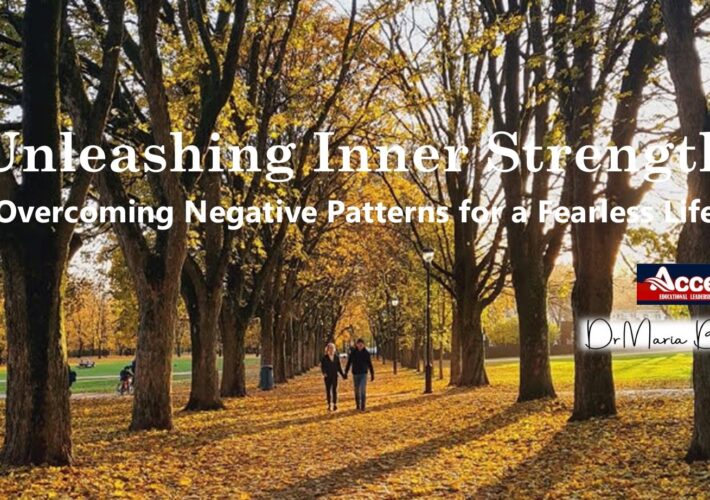Understanding Blended Family Dynamics for Healthy Relationships: Strategies for Blended Families in Second Marriages with Behaviorally Challenging Children.
When navigating situations where nothing seems to work requires a multifaceted approach that encompasses emotional support, realistic expectations, self-care, adaptability, community connection, reflection, and persistent effort.
Blended families, also known as stepfamilies, are formed when individuals with children from previous relationships come together to create a new family unit. The dynamics in a blended family are intricate and unique, influenced by various factors. Here are key dynamics commonly observed:
- Multiple Parental Roles: In blended families, children may have biological parents, step-parents, and potentially step-siblings. This dynamic introduces a variety of parental roles, each with its own set of responsibilities and expectations.
- Adjustment Periods: Family members often go through adjustment periods as they adapt to the new family structure. This period may involve challenges as individuals learn to navigate their roles and relationships.
- Complex Sibling Relationships: Sibling relationships can be complex in blended families. Children may need time to bond with step-siblings and adjust to the dynamics of sharing a home with individuals who may be from different backgrounds.
- Navigating Loyalties: Family members may grapple with loyalty conflicts, especially children caught between loyalty to their biological parents and acceptance of new step-parents and step-siblings.
- Communication Challenges: Effective communication is crucial in blended families. Family members must learn to express their feelings, concerns, and expectations openly while also being attentive to the needs and perspectives of others.
- Establishing New Family Traditions: Blended families often create new traditions that incorporate the unique backgrounds of each member. Establishing rituals and traditions helps foster a sense of unity and shared identity.
- Dealing with Ex-Spouses: The involvement of ex-spouses, particularly in co-parenting situations, adds another layer of complexity. Clear communication and cooperation between all parents are essential for the well-being of the children.
- Financial Considerations: Financial dynamics may vary, with each parent contributing differently to the family’s financial well-being. Open discussions about financial responsibilities and expectations are important.
- Coping with Emotional Baggage: Family members may bring emotional baggage from previous relationships. Understanding and addressing these emotional challenges are vital for building a healthy and supportive family environment.
- Role of the Step-Parent: Step-parents play a unique role in blended families. Balancing support and discipline while fostering positive relationships with step-children requires sensitivity and patience.
- Flexibility and Adaptability: Blended families often face changes in living arrangements, custody agreements, and family dynamics. Flexibility and adaptability are crucial for navigating these changes successfully.
- Unity and Common Goals: Establishing common goals and a sense of unity is vital for the well-being of the blended family. This includes aligning parenting styles, values, and expectations to create a cohesive family unit.
When adult children contribute to negative emotional dynamics, it can manifest in various ways that create an imbalance within the couple. Here are some examples of how such contributions may occur:
- Undermining the Stepparent’s Authority: The adult child may challenge or undermine the authority of the stepparent, creating tension and a sense of imbalance within the couple. This can lead to power struggles and disagreements on parenting approaches.
- Expressing Resentment Towards the Stepparent: The adult child may harbor resentment or negative feelings towards the stepparent, openly expressing dissatisfaction or disapproval. This emotional tension can affect the couple’s relationship and create an emotionally charged environment.
- Creating Alliances Against the Stepparent: Adult children may form alliances with one biological parent against the stepparent. This can lead to a sense of isolation for the stepparent and create divisions within the couple, contributing to emotional imbalance.
- Introducing Conflicting Parenting Styles: Adult children may bring different parenting styles into the blended family, causing disagreements between the couple on how to handle discipline, boundaries, and other parenting matters. This can create confusion and emotional strain.
- Interfering in Couple Dynamics: Adult children may involve themselves in the couple’s relationship dynamics, offering unsolicited opinions or intervening in disagreements. This interference can disrupt the couple’s ability to communicate and resolve issues independently.
- Bringing Personal Baggage or Resentment: Adult children may carry personal baggage or unresolved resentment from previous family situations. This emotional baggage can spill over into the blended family, affecting the couple’s ability to maintain a positive and balanced relationship.
- Resistance to Family Integration: Adult children may resist integrating into the new family unit, maintaining emotional distance or refusing to engage with other family members. This resistance can create a sense of isolation within the couple.
- Manipulating Family Dynamics: Adult children may employ manipulative tactics to control family dynamics, such as playing family members against each other or using emotional guilt. This manipulation can lead to an imbalance in the couple’s relationship.
- Disrupting Couple Time: Adult children who demand excessive attention or support from one biological parent may disrupt the couple’s time together. This can create frustration and emotional strain within the relationship.
- Creating Loyalty Conflicts: Adult children may place the couple in loyalty conflicts, expecting them to choose sides in disagreements. This can lead to a feeling of being torn between the partner and the adult child, contributing to emotional imbalance.
- Expressing Open Hostility: Adult children may openly express hostility or animosity towards the stepparent or the couple, creating a hostile emotional environment that impacts the couple’s relationship.
- Using Emotional Manipulation: Adult children may use emotional manipulation, such as guilt trips or emotional outbursts, to control situations within the family. This can contribute to emotional volatility and imbalance within the couple.
Clarifying boundaries and expectations is essential in creating a harmonious environment within the family structure. Dealing with a situation where an adult child is fostering negativity and using tactics to create challenges within a blended family can be exceptionally difficult. In such cases, addressing the issues with sensitivity, firmness, and a commitment to fostering a healthy environment is crucial. Here are steps to consider:
Open Communication: Initiate open and honest communication with the adult child. Express concerns about their actions and the impact on the family. Encourage them to share their feelings and grievances in a constructive manner.
Professional Intervention: Consider seeking the help of a family therapist or counselor. A neutral third party can facilitate discussions, mediate conflicts, and provide guidance on improving family dynamics.
Set Clear Boundaries: Establish and communicate clear boundaries regarding acceptable behavior within the family. Clearly outline the consequences for actions that negatively impact the family dynamic.
Individual Counseling: Suggest individual counseling for the adult child to address any underlying issues or resentment they may be harboring. Professional counseling can provide a safe space for them to explore and express their emotions.
Family Meetings: Hold regular family meetings where everyone can express their thoughts and feelings. Create an environment where open communication is encouraged, and each family member has an opportunity to contribute positively.
Protecting Other Children: Prioritize the well-being of the other children in the family. Clearly communicate with them about healthy family dynamics and provide emotional support. Shield them from any toxic influence as much as possible.
Seek Legal Advice (if necessary): In extreme cases where legal intervention might be necessary, consult with legal professionals regarding steps that can be taken to protect the family’s well-being and stability.
Parental Unity: Maintain unity between biological parents and step-parents. Present a united front when addressing issues with the adult child. Consistent communication and support between parents are crucial.
Educate and Empower: Provide resources for the adult child to educate themselves on healthy family dynamics and the impact of negative behaviors. Encourage them to take responsibility for their actions and seek personal growth.
Cultivate Positivity: Foster a positive environment within the family by emphasizing shared values, mutual respect, and cooperation. Encourage activities that promote unity and bonding among family members.
Seek Spiritual Guidance: If applicable, seek guidance from spiritual leaders or mentors within your religious community. Spiritual guidance can offer support and provide a moral compass for navigating difficult family situations.
Remember, these steps may not provide immediate solutions, and the process may take time. It’s essential to approach the situation with empathy, firmness, and a commitment to fostering a healthy and supportive blended family environment. Professional guidance can be invaluable in navigating complex family dynamics.
When a positive relationship is no longer possible is a complex and sensitive matter. The decision should be approached with careful consideration, taking into account the well-being of all family members and the overall dynamics of the family. Here are some factors to consider:
- Impact on Marriage: Assess the impact of the strained relationship with adult children on the marriage. If constant conflict and tension are negatively affecting the marital relationship, it may be necessary to take steps to protect the marital bond.
- Communication Attempts: Evaluate whether there have been sincere and consistent efforts to improve communication and mend the relationship with the adult children. If attempts have been exhausted without success, the decision to step back may be more understandable.
- Professional Guidance: Seek advice from family therapists or counselors. Professional guidance can provide valuable insights and strategies for navigating complex family dynamics and may offer solutions that weren’t apparent before.
- Impact on Other Family Members: Consider the impact on other family members, including any children involved. Strained relationships can create tension within the family unit, affecting everyone. Strive for a balance that minimizes negative consequences for all family members.
- Setting Boundaries: If the adult children’s behavior is consistently harmful and detrimental to the family, it may be necessary to set clear boundaries. This could involve limiting contact or establishing rules of engagement that promote a healthier family environment.
- Prioritizing Marital Well-Being: Prioritize the well-being of the marriage. If the strained relationship with adult children is causing significant harm to the marital relationship, couples may need to make decisions that protect the stability of their union.
- Individual and Couple Counseling: Consider individual and couples counseling to navigate the emotional challenges. Counseling can provide a safe space to express feelings, explore options, and develop coping mechanisms for both spouses.
- Reevaluate Over Time: Understand that family dynamics can change over time. While stepping back may be necessary for a period, it’s essential to remain open to reevaluating the situation as circumstances evolve.
- Maintain Respect: Even if there is a decision to limit contact, strive to maintain respect. Communicate boundaries in a respectful manner, emphasizing the importance of personal well-being and the preservation of the marital relationship.
Addressing challenges in a blended family, especially when an adult child engages in negative behavior that impacts the entire family, can be guided by biblical teachings. Here are some principles from the Bible that may offer guidance in building a successful blended family:
- Love and Forgiveness: Scripture Reference: Colossians 3:13 (NIV) – “Bear with each other and forgive one another if any of you has a grievance against someone. Forgive as the Lord forgave you.”
- Application: Emphasize the importance of forgiveness and love within the family, even when faced with negative behavior. Encourage family members to forgive and support each other.
- Setting Boundaries: Scripture Reference: Proverbs 22:6 (NIV) – “Start children off on the way they should go, and even when they are old they will not turn from it.”
- Application: Establish clear boundaries based on biblical values. Communicate and uphold these boundaries to maintain a healthy family environment.
- Correction with Love: Scripture Reference: Proverbs 3:12 (NIV) – “because the Lord disciplines those he loves, as a father the son he delights in.”
- Application: Approach correction with love and a desire for positive change. Emphasize the importance of discipline in a constructive and nurturing manner.
- Modeling Good Behavior: Scripture Reference: 1 Timothy 4:12 (NIV) – “Don’t let anyone look down on you because you are young, but set an example for the believers in speech, in conduct, in love, in faith, and in purity.”
- Application: Model positive behavior and values as an example for the entire family, demonstrating the principles of the faith in daily life.
- Prayer and Seeking Guidance: Scripture Reference: James 1:5 (NIV) – “If any of you lacks wisdom, you should ask God, who gives generously to all without finding fault, and it will be given to you.”
- Application: Turn to prayer for guidance. Seek wisdom from God and ask for discernment in navigating the challenges faced by the family.
- Unity and Harmony: Scripture Reference: Psalm 133:1 (NIV) – “How good and pleasant it is when God’s people live together in unity!”
- Application: Emphasize the importance of unity within the family. Encourage family members to work together to maintain harmony and support one another.
- Reconciliation: Scripture Reference: Matthew 5:23-24 (NIV) – “Therefore, if you are offering your gift at the altar and there remember that your brother or sister has something against you, leave your gift there in front of the altar. First, go and be reconciled to them; then come and offer your gift.”
- Application: Promote the idea of reconciliation. Encourage family members to address conflicts and work towards resolution and healing.
- Patience and Endurance: Scripture Reference: Hebrews 10:36 (NIV) – “You need to persevere so that when you have done the will of God, you will receive what he has promised.”
- Application: Emphasize the virtues of patience and endurance in facing challenges. Trust in God’s plan for the family and persevere in your efforts to build a successful blended family.
Applying these biblical principles requires a commitment to faith, love, and the values taught in the Scriptures. Seeking pastoral guidance and involving the entire family in discussions about biblical teachings can contribute to a shared understanding and commitment to building a successful blended family.
In navigating the challenges of a blended family where an adult child is embracing negative behaviors and adversely affecting the family dynamics, individuals may seek guidance from their faith or religious beliefs. While interpretations of religious teachings can vary, many faith traditions offer principles that can guide individuals in fostering a healthier and more harmonious family environment. Here are some general considerations aligned with a spiritual perspective:
- Prayer and Spiritual Guidance: Seek solace and guidance through prayer or meditation. Turning to one’s faith for strength and seeking spiritual guidance can provide a sense of support during challenging times.
- Forgiveness and Compassion: Embrace the principles of forgiveness and compassion. Many religious teachings emphasize the importance of forgiving others and approaching challenges with a compassionate heart.
- Setting Boundaries: Establish clear boundaries that align with your faith’s values. This may involve limiting negative influences and behaviors within the family while maintaining a commitment to love and understanding.
- Teaching Moral Values: Reinforce moral and ethical values that align with your faith. Actively engage in teaching positive principles and values to counteract negative influences.
- Modeling Positive Behavior: Be a role model for positive behavior. Demonstrate the values and virtues you wish to instill in your family, serving as an example for others, including the troubled adult child.
- Encouraging Redemption: Embrace the concept of redemption and the possibility of positive change. Encourage the troubled individual to seek redemption through positive actions and personal growth.
- Love and Patience: Practice unconditional love and patience. While challenging, expressing love and demonstrating patience can be transformative, even in the face of difficult circumstances.
- Practicing Humility: Cultivate humility in addressing the situation. Acknowledge personal limitations and turn to your faith for strength in dealing with challenges beyond your control.
- Seeking Wisdom: Proactively seek wisdom from religious texts or teachings relevant to family dynamics. Consider passages that offer insights into handling conflicts and fostering positive relationships.
- Personal Reflection: Engage in personal reflection and introspection. Consider how your actions align with your faith and whether adjustments can be made to promote a healthier family environment.
Conclusion: Addressing the challenges requires open communication, setting clear boundaries, and seeking professional support when needed. By identifying and addressing negative emotional dynamics, couples in blended families can work towards restoring balance and fostering a healthier relationship.
By Dr. Maria Pinto Barbosa #DrBarbosa
Certified as School Board of Education / PHD-Doctor of Philosophy in Cristian Clinical Counseling
ACCEL-Holistic Life Coach / Founder-Director of ACCEL Educational Leadership
Specialized on Temperaments – Personalities
Pastor Christian Minister Clergy / Bachelor of Theology in Pastoral leadership and Certified EETAD Theology
Discover more from Dr Maria Barbosa
Subscribe to get the latest posts sent to your email.





